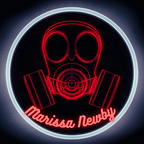What Is White Phosphorus and Is It A Chemical Weapon?
On Thursday, Ukrainian President Volodymyr Zelensky held a virtual address with NATO leadership about the Russian invasion. He stated “This morning, by the way, there were phosphorus bombs. Phosphorus Russian bombs. Adults were killed again and children were killed again…”. The claims have not been verified. What is white phosphorus and what history does it have in the context of conventional and chemical weapons?
Incendiary Weapons
The classification of white phosphorus is complicated. The Convention on Certain Conventional Weapons states in Protocol III that an incendiary weapon is
any weapon or munition which is primarily designed to set fire to objects or to cause burn injury to persons through the action of flame, heat or combination thereof, produced by a chemical reaction of a substance delivered on the target
However, incendiary weapons do not include munition that are meant to illuminate or produce smoke for those expressed purposes. White phosphorus, in this context, can be murky in its use. Certainly, the picture can be clarified when it is used in civilian areas. International humanitarian law dictates that incendiary weapons cannot be used against civilians. White phosphorus carries the benefit of lighting areas and denying territory to approaching forces. When utilized improperly or using improper target allocation, white phosphorus can burn through skin, muscle, tissues and bone if personnel or civilians contact the substance.
Chemical Information and Health Effects
White phosphorus burns at over 1472 degrees F and ignites at approximately 86 degrees F. This can cause damage to equipment, housing, personnel, civilians, vegetation and everything else in it’s path. White phosphorus ignites on contact with air and reacts violently with oxidants, some metals and other compounds. If it is introduced to a strong base or caustic material, it creates phosphine gas. It also creates phosphorus oxides when introduced to air. The burning of this chemical agent in air create thick smoke and it can reignite in air even after it was covered or decontaminated.
It appears white to yellow and is a waxy solid. It will darken when exposed to light. Depending upon odor to identify white phosphorus is unreliable because it smells like garlic or Sulphur, but once it contacts the olfactory senses you can become “nose blind” to it pretty quickly. In addition to contact creating burning and physical damage, inhaling white phosphorus gases can cause respiratory damage or failure.
Exposure to white phosphorus has 3 basic phases. The first phase is gastrointestinal and can occur within a few minutes of skin exposure or be latent up to 8 hours. This initial phase can be fatal and causes a form of shock within 24 to 48 hours. The second phase is the asymptomatic phase and can last up to 3 days. The third phase is multi-system organ failure after it is introduced into your body systems or blood stream. This phase is also fatal and can cause death 4 to 8 days after exposure.
Classification As A Chemical Weapon and History
White phosphorus is not a chemical weapon. That does not mean that using it does not carry international humanitarian ramifications. Several uses of white phosphorus are stated in case studies in international humanitarian law. Historically, white phosphorus has been suggested or confirmed in Erbil against Kurdish rebels, in Grozny by Russian forces, in Fallujah by the United States, in Gaza by Israel, in Mogadishu by Ehtopia, in Afghanistan by the United States, in Syria against Syrian civilians and, finally, in Myanmar by police forces. All of mentioned uses had civilian implications. There are several other claims that white phosphorus have been used but the use was unconfirmed.
In spite of its civilian damages, white phosphorus is not considered a chemical weapon and is, therefore, not covered by the Chemical Weapons Convention. The CWC considers chemical weapons “toxic chemicals and their precursors…as long as the types and quantities are consistent with such purposes, munitions or devices specifically designed to cause death or other harm through the toxic properties, or any equipment specifically designed for use direction in the connection with employment of munitions specified”.
The Organisation for the Prohibition of Chemical Weapons has not traditionally considered white phosphorus as chemical weapon. Primarily, white phosphorus is produced in order to illuminate and produce a smoke screen or deny access to areas with the smoke it produces. Incendiary devices are conventional weapons and carry the qualifier that using them is conducted in non-civilian areas. Russia has signed both the Chemical Weapons Convention and the Convention on Certain Conventional Weapons and is therefore held to an international standard on the use of incendiary weapons in engagements.
The situation in Ukraine is ongoing and international leadership is investigating the claims. The geopolitical issues in the Russia-Ukraine engagement are of global concern. What are your thoughts?
